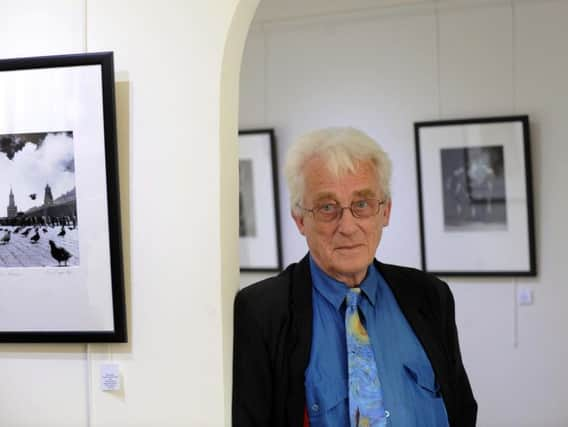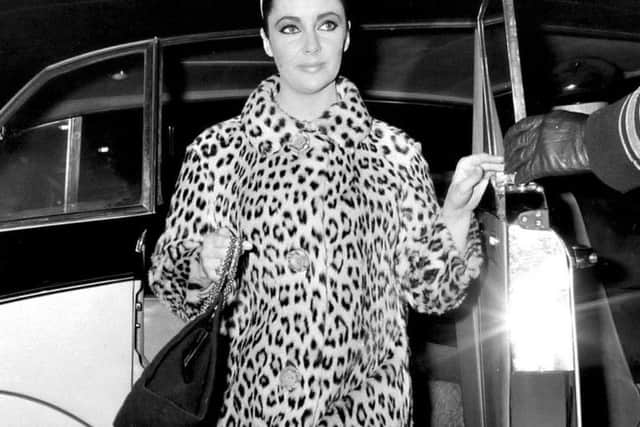Obituary: Terry Cryer, top music photographer, 1934-2017


In the scheme of things it amounted to only a footnote in the illustrious career of one of Britain’s greatest postwar photographers and printers which took him from Leeds to Fleet Street and then the world. Tributes have been made at the highest level to the man once described by Mojo magazine as “the Dean of UK jazz and blues photographers” since he died at Saint Michael’s Hospice in Harrogate at the age of 82.
Here his son-in-law Mark Woffenden writes about Terry Cryer’s life and achievements
Advertisement
Hide AdAdvertisement
Hide AdTerry Cryer, photographer and printer, has died at the age of 82.


His autobiography, One In The Eye, offers in its title a number of clues as to an uncompromising, individual, idiosyncratic, sometimes difficult but always driven approach to life.
Mostly self-taught, he often placed his work as a photographer below his printing. In the dark room, his images were imbued with depth and spirit.
It was, his family recalls, a strange alchemical process, one that numbed and yellowed his fingers and often kept him isolated. Yet for Terry, it was the right way: “I don’t agree that photographs should be left alone. I am from the pictorial school.”
Advertisement
Hide AdAdvertisement
Hide AdHe grew up the younger of two brothers in wartime Leeds. Though a hard life, evacuation brought a change in taking him to Braithwell, South Yorkshire, where he lived with the Thompsons, a gentle and elderly couple.


Their humble lifestyle was to influence every aspect of Terry’s outlook in later life, and he would often become misty-eyed when recalling their kindly ways.
After leaving school, Terry took a job at film processing firm, Cardigan D&P. He earned 29 shillings a week, and his interest in photography was piqued.
At 17-years-old he enlisted and joined the Royal Engineers Regiment, presenting himself as a photographer. He often marvelled that this was accepted at face value.
Advertisement
Hide AdAdvertisement
Hide AdTerry was assigned to the War Office, and spent three years in Egypt taking a range of pictures, professional and personal.
Demobbing just before his 21st birthday in April 1955, he returned to a series of jobs that included snapping holiday-makers at Butlin’s and offering door-to-door baby photography. All of these shots were printed by Terry, to self-imposed short deadlines.
He arrived back in Leeds and met Bob Barclay, who was about to set up what would become the celebrated northern jazz café, Studio 20.
Terry documented this nascent scene for a few years, including a very short time out for a broken neck sustained in a car accident returning from a Big Bill Broonzy gig in Manchester – “Bob Barclay was driving”. Eventually, Terry moved to London, to record the thriving Soho circuit.
Advertisement
Hide AdAdvertisement
Hide AdOver this time, Terry met and befriended a number of American jazz and blues musicians. Many were taking advantage of British interest in their work to escape the censorship and prejudice they faced at home.
Referred to as the ‘Dean of UK Jazz and Blues photographers’ by Mojo magazine, Terry was more diffident about his role in capturing some of the most iconic images of these artists.
He always argued that his photography was not about the subject, but human warmth and sympathy emanate from his pictures.
It is, perhaps, the way that he depicts people, rather than genre exponents, which brings to life such great figures such as Count Basie, Coleman Hawkins, Ella Fitzgerald, Louis Armstrong and Otilie Paterson, to name a handful.
Advertisement
Hide AdAdvertisement
Hide AdThe influential guitarist and singer Sister Rosetta Tharpe was matron of honour at Terry and Ann Dear’s wedding in 1957, paying for their honeymoon night in Liverpool.
By his own account, what the musicians were doing on stage was secondary: “I was never really listening to the music while I was taking pictures of people performing. I am a fan of traditional jazz but I’m tone deaf and one ear doesn’t work.”
It is, perhaps, no surprise that he found it easy to turn from the company of musicians to begin more regular work for Associated Press from 1960.
He followed an intriguing route, travelling to Soviet Russia, picking up awards for his pictures on his return, and then moving into increasingly commercial projects, such as providing coverage at Le Mans motor racing for Gulf Oil.
Advertisement
Hide AdAdvertisement
Hide AdThese assignments brought material security, although the travel proved a strain personally. Terry remarried, after meeting model Johanna de Jong in Holland in the mid-1960s.
They were to have three children together; family life and changing priorities eventually took them back to Terry’s spiritual home in the north.
Terry took a characteristically contradictory path from Fleet Street to local news, covering events around Yorkshire for Ackrill Newspapers.
He also worked on projects with local arts producers and promoters, and was professionally perhaps most proud of his images for Phoenix Dance Theatre in Leeds.
Advertisement
Hide AdAdvertisement
Hide AdFor the rest of his active career, he interspersed his day job with teaching and lecturer roles, mentoring several young photographers and training people in the arts of the darkroom.
Not known for suffering people he considered fools at all, he walked out of one job interview at a high profile independent school after being shown the dark room with its glowing red safe light.
He recounted that they should have known that it might be cinematically attractive but it would ruin the prints.
The advent of digital photography came too late to be of any impact on his career, although he regarded the increasing megapixel capacity of modern cameras and phones with wonder, and a little envy, at what he might have been able to do with them.
Advertisement
Hide AdAdvertisement
Hide AdFor someone whose Photoshop skills were entirely chemical and paper based, he recognised the scope that modern technology offered – but he also regarded it as a separate medium, as a painter might distinguish between charcoal and oils.
Although Terry retired from photography, he continued to print. Even in the last year of his life, he was using one corner of the basement kitchen of his house in Knaresborough as a darkroom, turning out images that he would rinse in the bath upstairs.
When not at work, he could be found using the computers in Knaresborough Library, doggedly seeking out unauthorised digital usage of his images.
Besides demanding appropriate redress and recognition, Terry’s aim was often as much to lambast whoever had badly cropped his pictures to fit them on the cover of some CD re-issue.
He died peacefully on 15 January in Saint Michael’s Hospice, Harrogate, surrounded by his three daughters, Kelly, Dani and Julee.
His funeral took place at Tarn Moor near Skipton.